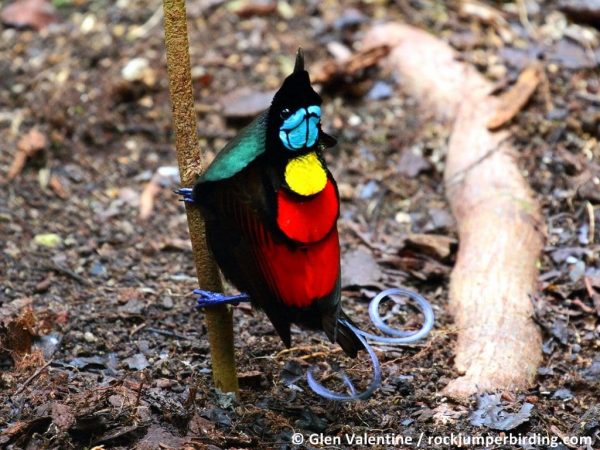Another great year for birding has flown by, presenting our tour leaders with the difficult task of selecting their top bird out of hundreds and thousands of specials seen in 2016. The rest of us however have the pleasure of reading the year’s highlights from our leaders as recorded in their own words.
Grey-crested Helmetshrike – Adam Riley
It took me 7 trips to the Serengeti, Maasai Mara and Lake Nakuru, all known stake-outs for the scarce Grey-crested Helmetshrike, before I finally nailed my East African nemesis bird. During a safari around northern Tanzania in December, this species was my only potential lifer, and my eyes were obviously peeled. We were watching a pair of Bronze-winged Coursers with a young fluffy chick in the fabulous Grumeti concession, belonging to Singita to the west of the Serengeti, when I picked up movement in the corner of my eye…a flock of helmetshrikes! I had found helmetshrikes once before in Nakuru and they had turned out to be the common White species so it wasn’t a foregone conclusion, but with bated breath we approached and as soon as I saw their yellow eyes, lack of eye wattles, grey crests and half-collars on their chests I knew I had struck gold! What a thrill it was to finally locate this rare and little-known species restricted to south-western Kenya and adjacent northern Tanzania. And then to my surprise, later in the heat of the day whilst relaxing around the pool of our lodge, lo and behold, another flock of Grey-crested Helmetshrikes casually came as if they weren’t even anything special!
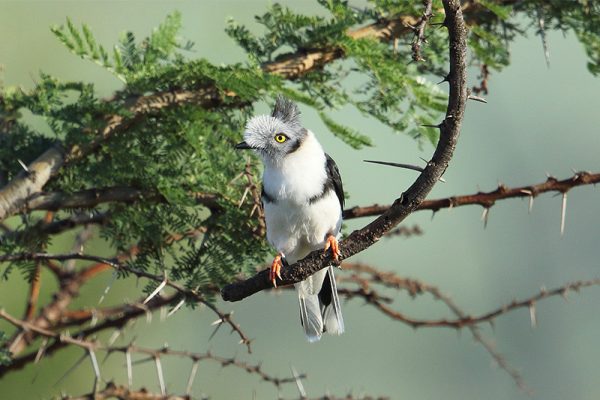
Reeves’s Pheasant – Clayton Burne
2016 seems to have come and gone awfully quickly with another quiet year on the global lifer front. However, a chance opportunity saw me heading over to Asia for the 7th Asian Bird Fair, an assignment I received primarily because every other guide was busy. Despite having no particular love for Asian birding (the Neotropics are my preferred destination by a country mile), the location of the 7th Asian Bird Fair was attractive for other reasons. As a child, I had a predilection for digging holes in the backyard, my mother dubiously informing me on more than one occasion that if I dug deep enough I’d end up in China. I have been incrementally fascinated with China ever since. Yet with such limited interest in Asian birding, I didn’t even know what species I should be on the lookout for. Having agreed to a 40-hour flight schlep all the way to this region, I decided to add an extra week to my short itinerary – if not for the birds, then at least as a short rest from the arduous international flight plan. Atypically for someone whose bread and butter is operational logistics, I left it rather late to plan this extra week. A quick page through the field guide confirmed my expectations, that I should rather have been going to the Neotropics. Then I laid eyes on one particular species nearer the front of the book, a white head split by a narrow black band, body covered in golden scales, all adorned with the world’s longest tail feathers – reputedly up to 2.4 metres long! This was certainly worth seeing…
A week after arriving, I had bagged 4 species of crane (including more than 60 Siberian’s!), the very rare and sexy Scaly-sided Merganser, the brought-back-from-the-brink-of-extinction Crested Ibis, scores of beautiful Mandarin Duck and a host of other goodies. However, it was after having waited for over two hours to get my first glimpse of my aforementioned desire that I realised this was by far and away the best bird not only of the year, but possibly much longer. I sat transfixed (read finger on shutter release for much of the time) as this most prized and attractive individual gave us a full 20 minutes of uninterrupted viewing! A few days later I was to see further males, standing near the side of the road displaying through the fog to a bevvy of females. My bird of the year is none other than the Chinese endemic, Reeves’s Pheasant.
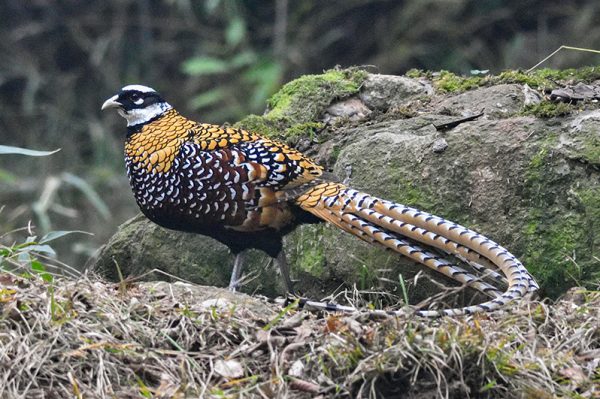
Herero Chat – Cuan Rush
On a recent Namibian overland trip, I encountered excessively arid conditions, even for this destination, and virtually no birds were vocalising. This made birding rather challenging and for certain species such as Herero Chat, which is never easy to track down – I was concerned the group may struggle to get views of the bird. The usual cold and windy conditions prevailed during our descent of the spectacular Spreetshoogte Pass and the going was slow. However, our perseverance eventually paid off and I managed to locate a pair on the downslope. After watching the birds for a few minutes, one of them ventured out to the roadside, allowing nearby approach and, in turn, outstanding views! It is always great finding a highly sought-after species, especially when accompanied by such a clear sighting!
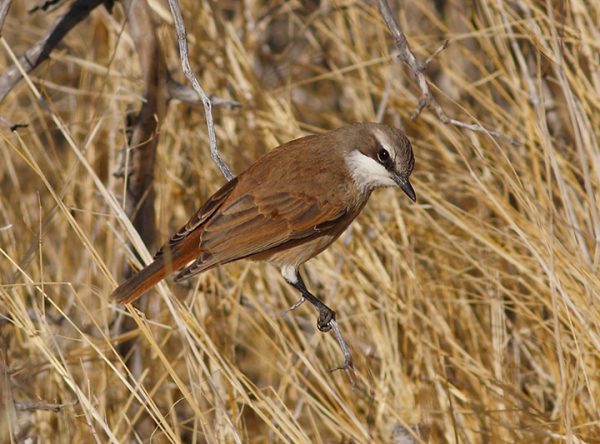
White-headed Robin-Chat – Keith Valentine
Angola has for many years been right at the top of my dream list of travel destinations. The country has always had that lure of adventure and for so many years Angola’s stunning endemics were off limits due to civil war. This is however now long in the past and Angola is quite simply a fabulous country to explore, with an extraordinary variety of merging habitats and wonderful birds. Highlights were certainly seeing my final mousebird – Red-backed, my final Turaco – Red-crested and my final wattle-eye – White-fronted. Also high on the list were three of my last four bushshrikes – Gabela, Monteiro’s and Braun’s.
Ultimately though, the number one highlight for me was finding the gorgeous White-headed Robin-Chat, a species that was only described as recently as 1955 and which is still only known from two sites. One of these lies in the Democratic Republic of the Congo and the other in far northern Angola. The site itself is beautiful and pristine, a lovely little stream running through an expanse of gallery forest, which is surrounded by seemingly endless tracts of miombo woodland and seasonal wetlands. I have always had a special love for hard to find, shy forest birds and White-headed Robin-Chat ticks a number of these boxes, with the added attraction of being strikingly plumaged with a sweet song. I had played the bird up in my head but ultimately the experience of seeing this little known gem was far beyond my expectations.
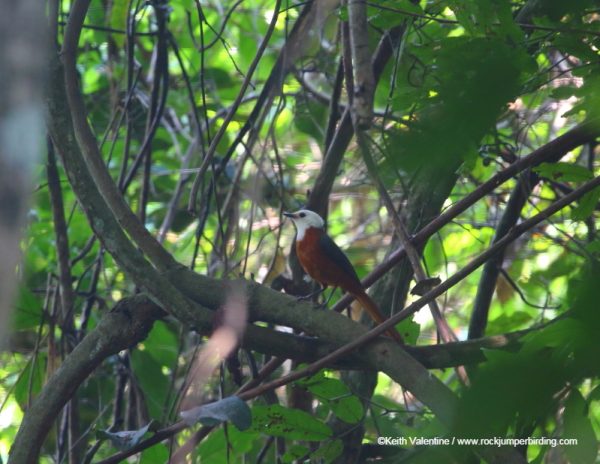
Recurve-billed Bushbird – Forrest Rowland
My 2016 Bird of the Year was not a lifer. For guides, perhaps especially, new birds constitute the majority percentage of memorable experiences while on tour. Every now and then, an old friend sneaks in. My favorite bird last year was the Recurve-billed Bushbird. Most people haven’t even heard of such a creature, unless they are into antbirds, bizarre-looking birds, or incredibly rare, range-restricted species. The Recurve-billed Bushbird is a bizarre-looking, rare, range-restricted antbird confined to dense tangles and underbrush of northeast Andean foothills in Colombia and adjacent, inaccessible parts of Venezuela. Therefore, it holds a lot of appeal to me. Add to that the enigmatic behavior and nature of the bird (very little is actually known about it, though a lot of conjecture exists), and this particular species earns a rank amongst the most sought-after species in the new world.
We had travelled to the remote, quaint, mountain town of Ocana, just 30 miles or so from the Venezuelan border, with the hopes of seeing this species on our Remote Colombia Tour. There are a few other very fine birds inhabiting the Hormiguero de Torcoroma Preserve, but given the Bushbird’s near-mythical status, and the fact that only one in four visiting groups actually lays eyes on the thing, anticipation was high in the hopes that we might get a glimpse of this elusive, striking, bird. The trail down into the prime habitat was steep. It had rained a bit the night before. Conditions were not at all easy, good, or even good enough to be called bad. The trail condition was horrible, and took a good hour or so to traverse the mere 500m of trail to get down next to the ravine where I knew a pair was lurking. Between slips and slides we got looks at Stripe-breasted Spinetails, Black-and-White Becard, Chestnut-bellied Thrush, Gray-throated Warbler, and some other great birds. Despite the activity that was going on around us, not a peep from the Bushbird was heard. We waited. We listened. We waited some more. Nada. So we slid a little further down the trail…
When we arrived to a spot on the trail I thought favorable, I decided that this was it. This was where we’d make our stand. We’d either see it here, or trudge back up the trail, defeated. Conditions were just too difficult to carry on. So, as a final Hail Mary, I softly played a recording I had of the female of the species. No response. We waited a couple minutes. Nothing. I played another strophe. No response. Nerves were taut, eyes were darting back and forth. Nothing. I was about to hit “play” a final time, when I noticed a large blob silently appear in the bamboo, not 10 feet from me. I didn’t even lift my bins, I just whispered harshly to everyone “She’s here!!!”
Bright Rufous, sporting an insanely disproportionate, though somehow endearingly attractive, huge bill, this female sat there, in clear view, 10 feet from us! Cameras were raised, a shot or two was taken, she hopped down out of view. We were elated! We had seen one of the most difficult species on the continent, great views. Then I heard a Bushbird begin to sing. This wasn’t the female. This was the male. Up he popped! Then she came back out. The male flew across the trail beside us, and the two birds began calling back and forth to one another, with us in between. Incredible! I’d never had such near, clear views, in my life. We all would’ve been more than contented with the initial experience with the female. But to have great looks at both sexes, and hear them sing raucously right beside us, was beyond anything. Amongst the over 2600 species I was fortunate enough to see in 2016, this obliging pair of Bushbirds was the most memorable.
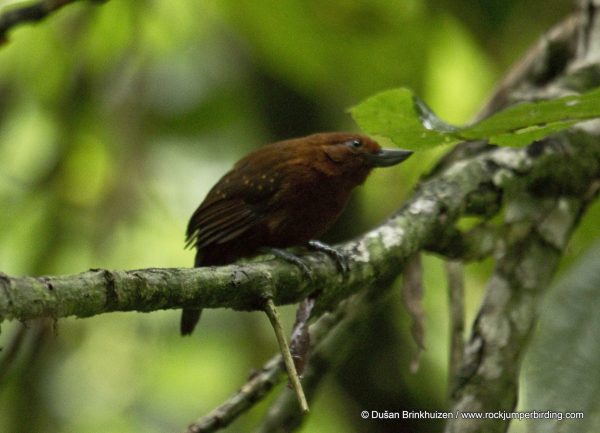
Spotted Pardalote – Rich Lindie
My bird of the year is neither rare nor hard to find but certainly a looker, and full of spunk to boot. Indeed, it ousted several very rare birds that I saw this year so it must have something going for it!
Enjoying a cup of great coffee during a recent private trip to Royal National Park in New South Wales, Australia, we noticed some movement in a nearby pile of cut brush, just meters from our feet. Unable to find the movement at first, and not wanting to abandon our coffee for too long, we gave up the search after just a couple of minutes. Just a few moments later, however, more movement captured our attention, though this time one of us managed to glimpse where the critter had disappeared to – albeit to the underside of the brush! The culprit? None other than this gorgeous male Spotted Pardalote pictured here. We watched him for almost two hours as he repeatedly returned to the brush pile to collect nesting material, seemingly completely unperturbed by our presence, and often under the brush for a minute at a time, invisible to the greater world around it. At times, a potential threat – both human and otherwise – would approach too close to the nest (which was also just a few meters away), only to be chased off by this tiny but seriously brave little male or his mate. One of my favourite birds in the world, and the kind of enjoyable sighting that reminds us why birding is about a lot more than just the pursuit of the rare!
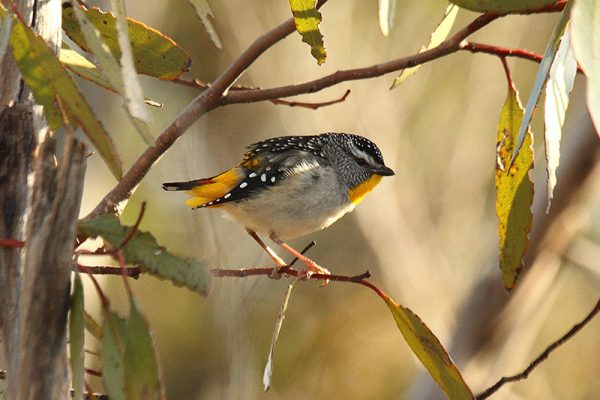
Southern Ground Hornbill – Megan Taylor
2016 marks my first appearance on Rockjumper’s annual Bird of the Year series. Having only taken up birding last April, it has been somewhat of a rollercoaster ride from initial interest to full-blown twitcher. This year has taken me across the length and breadth of South Africa, Botswana and Namibia, encompassing one incredible destination after another. From the Okavango Delta, the dry woodlands and coastal deserts of Namibia, KwaZulu-Natal forests and grasslands to the immense Kruger National Park and stunningly attractive Western Cape, there was plenty of hardcore birding, copious large mammals, a stomach-turning pelagic and even a little time for wine tasting. Despite the numerous choices, my bird of the year is one that caused us many fruitless searches in KwaZulu-Natal. It was one of those birds that drew my attention in the field guide during the early days of my birding career, but ended up taking much longer to find than initially expected. The largest hornbill in the world, with piercing eyes, puffy red neck pouch, a lethal bill and purposeful strut – my bird of 2016 is the Southern Ground Hornbill.
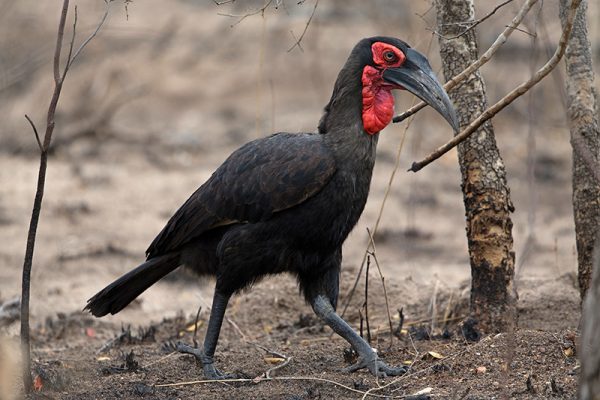
Raggiana Bird-of-paradise – Wayne Jones
My top pick for 2016 is by no means the rarest or most sought-after member of its family, but it is probably the most iconic. Earlier this year I embarked on my maiden visit to enigmatic Papua New Guinea. One of our first activities was to visit a Raggiana Bird-of-paradise lek in Varirata National Park. Riotous squawking revealed that the lek was very active that morning, and soon we spotted flashes of strawberry-maroon as the birds hyperactively dashed through the forest canopy. In no time we all had good positions and watched as the raucous males displayed and worked themselves into a feathery frenzy every time a female happened upon the scene. I’ve seen pictures of birds-of-paradise since I was a kid; to finally see my first “proper” one (excluding brief glimpses of a Paradise Riflebird in Australia) was a moment I’ll never forget.
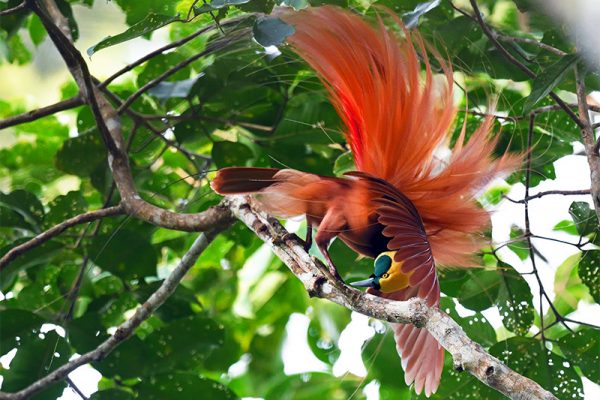
Grasshopper Buzzard – Andre Bernon
December 2016 had something great in store for me. I was leading a new tour that we had set up, to central Mozambique in the Zambezi River delta. The trip is primarily focused on finding gems such as African Pitta, East Coast Akalat, White-chested Alethe, Lowland Tiny Greenbul, Bohm’s Bee-eater and Black-headed Apalis. This area is totally unexplored from a birding perspective and could surprise us with anything really. We really were surprised and lucky to find, the bird of the year for me and a 2nd record for the southern African sub-region, a Grasshopper Buzzard!
We rounded a small corner on the floodplain and a medium sized raptor was seen perched on the ground on a small termite mound. Initial views showed a bird with a small head, light underparts, pale eye, dark malar stripes and supercilium. The bird then took off in flight, briefly, and exposed a fantastic rich rufous coloured wing panel – Grasshopper Buzzard! This bird is virtually unknown to this part of the world and was obviously very lost. A second record for the southern African sub-region! We all enjoyed views as it continued to fly from mound to mound and often running on the ground with its wings spread in pursuit of its prey, locusts.
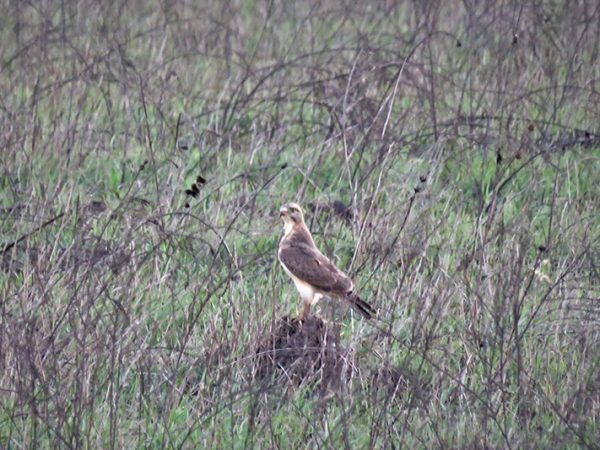
Sooty Falcon – Greg de Klerk
Being restricted primarily to South Africa this year I was able to connect with a few species which had been eluding my grasp in the sub region. Eventually, I was able to connect with a bird which had frustrated me intensely as I chased it up and down the eastern coastline. It took me a total of five attempts before I managed to spot the Sooty Falcon and add this wonderful raptor to my life list! Travelling through an area where Blue Gum (Eucalyptus Saligna) was present, we caught a glimpse of what appeared to be a small falcon-like raptor chasing after something. We followed in hot pursuit but unfortunately lost the individual. While scanning our surroundings, we managed to get a glimpse of the creature as it landed in a tree. Setting off again, fingers-crossed, and hearts pulsating, we searched for a better viewing spot. Eventually, we were rewarded with excellent sights of an adult Sooty Falcon just meters away!
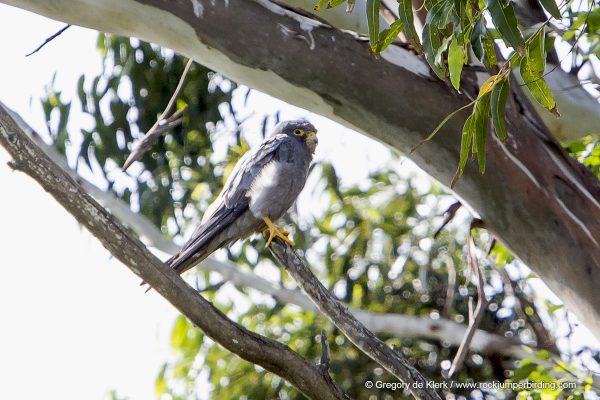
Powerful Owl – Erik Forsyth
My bird for 2016 was an easy choice, Powerful Owl, even though I had seen many good birds during the year, such as Siberian Crane, Steller’s Sea Eagle, Ural Owl, Rainbow and Noisy Pitta and Chatham Albatross, to name a few. I have been to Australia several times on tour and even though we cover a large area, nocturnal birds are hard to come by. We were nearing the end of our tour in New South Wales with local bird guide Simon Starr. I had asked Simon early on about this species and he had indicated that there might be a possibility for it. On the penultimate day of the tour, we walked along a river with large gum trees, Simon said that we were looking for a surprise bird and I realised then that this was the site for Powerful Owl. With excited anticipation, we scanned many trees along a fair stretch of the river and at a junction at the river-bend; I scanned up and was shocked to see a huge beast with bright eyes looking down at me. YES! Powerful Owl – wow, what a bird. We were a very excited group and many pictures were taken. Further inspection noted it had a Red-wattled Honeyeater in its huge talons. This was a really important sighting for me.
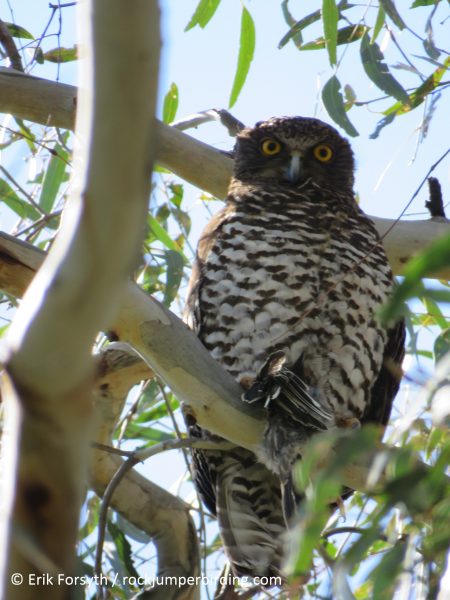
Wilson’s Bird-of-Paradise – Glen Valentine
No other bird on Earth sports the same incredible and outrageous colour combination as the Wilson’s Bird-of-of Paradise! Coupled with its bright, bald head and remarkable spatula-tail this is truly a species unrivalled in appearance.
The Wilson’s Bird-of-paradise, as its name suggests, is one of 41 representatives of the Bird-of-paradise family. It is endemic to Indonesia’s Waigeo and Batanta Islands off western New Guinea where it survives in lowland rainforests on these two small islands and is currently listed as Near Threatened, with risk of extinction due to ongoing habitat loss and exploitation.
During Rockjumper’s West Papuan Island Cruise in November 2016, I was fortunate to have the unique opportunity to observe the Wilson’s Bird-of-paradise in the wild on its native island of Waigeo. Well before dawn, the group and I departed the ship on zodiacs and headed across to a landing point on Waigeo, where we boarded 4×4 vehicles and drove a short distance to an area of beautiful, pristine, primary lowland rainforest. We split up into four separate groups and walked into the forest with headlamps in order to arrive at the display sites for this near-mythical species just before dawn. Several hides have now been set up at various display grounds within the forest and we arrived at the hides at the perfect time to see this mind-blowing species. Within minutes, several males were heard giving their rasping calls from their arboreal perches to attract the surrounding females and seconds later, there was a splash of the most intense colour imaginable on the forest floor ahead of us. There it was, in all its glory, a male Wilson’s Bird-of-paradise. Over the course of the next two hours, all four hides were treated to the most sensational, repeat views imaginable of this bucket-list bird! What an incredible experience and one that we will no doubt remember forever!
